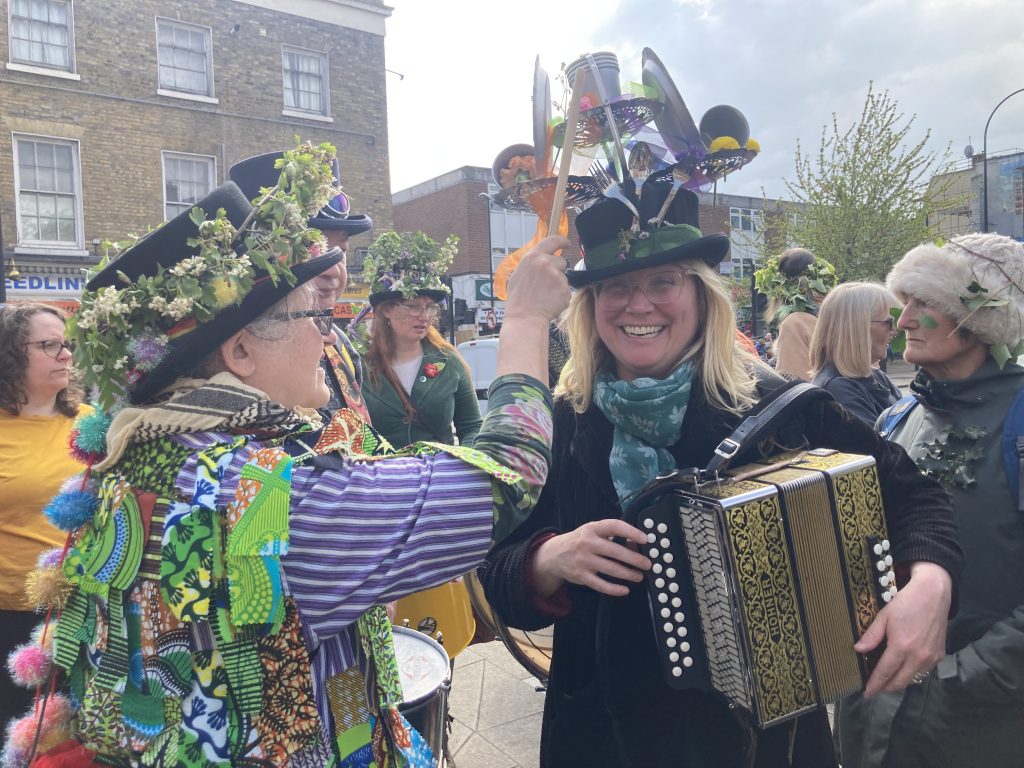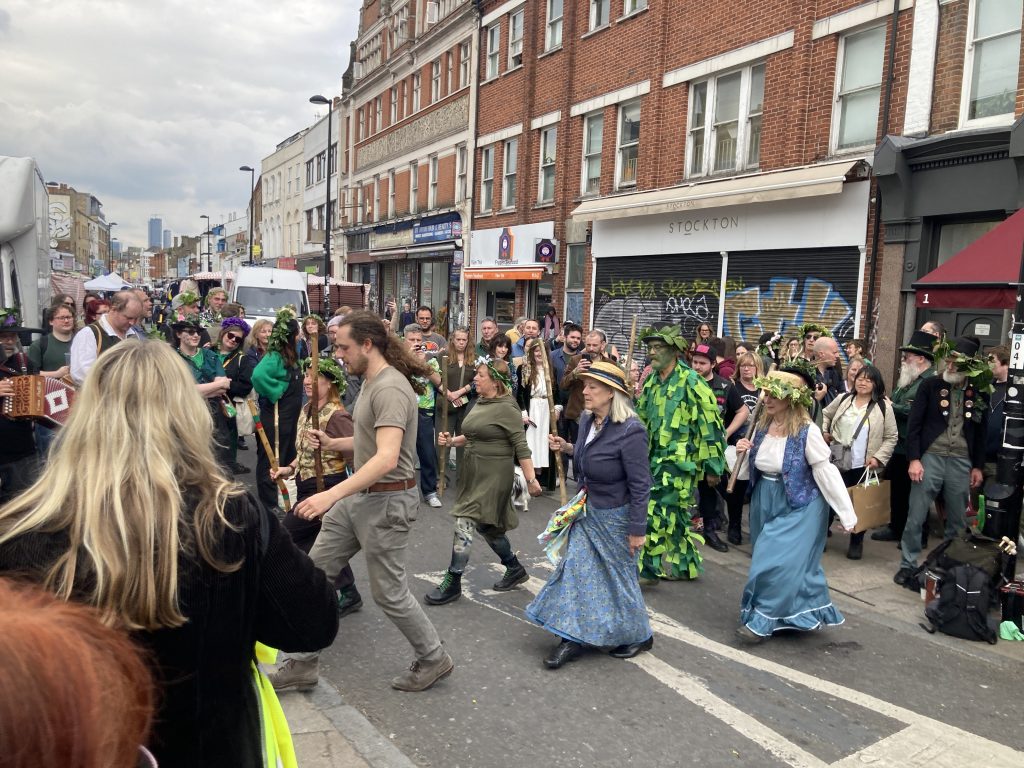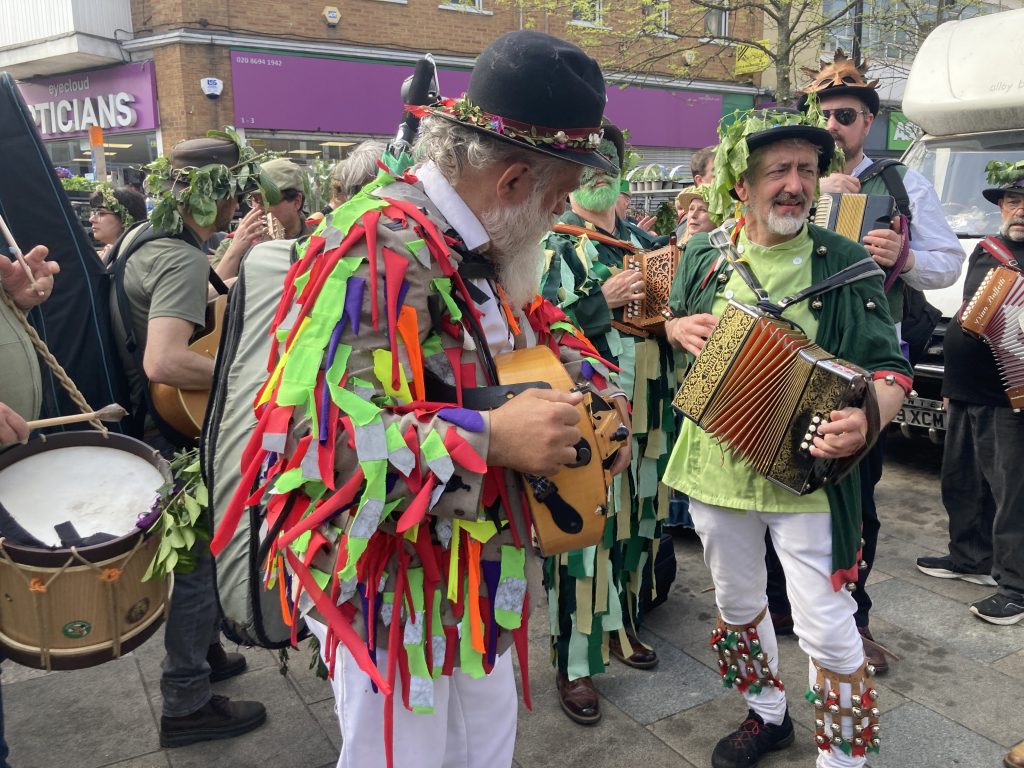Jack in the Green is a May Day celebration with disputed origins. Many believe the event to be an amalgamation of ancient pagan customs with a 17th century urban tradition originating from milkmaids, and later picked up by chimney sweeps and other neighbouring guilds. According to this theory, milkmaids would carry pyramid-shaped garlands decorated with flowers and silver household objects upon their pails during May Day celebrations, collecting payments from residents. In a bid to outdo them, the chimney sweeps made bigger garlands, expanding them until the figure of “Jack-in-the-Green”, an all covering structure made up of leaves, branches and flowers, was created. While the tradition died out in the late 1800s, the 1970s folk revival led to it reappearing in many regions across England, each with its own intricacies. Deptford’s Jack was revived in the 1980s by members of the Blackheath Morris Men and has been running since then.


A range of mystical characters can be observed taking part in the 2024 Fowler’s Troop Deptford celebration. Firstly, Jack in the Green is at the centre of the procession, draped in garlands and flowers. He is followed by musicians, performers and ‘Bogies’, his attendants, who are dressed in rags and covered in green paint. Costumes that can be spotted include milkmaids wearing headdresses covered in silverware, a dancing pink ‘Obby ‘Oss and a group of ‘gut girls’ carrying baskets of gizzards during their day off from Deptford’s Foreign Meat Market. Further participants include Morris dancers, clowns and processioners, many adorned with flower crowns and carrying along walking sticks and banners, with others wearing more elaborate summer and folk themed costumes.
The colourful festivities include dance and music performances as well as an extensive procession. They conclude outside a local pub, “The Dog and Bell”, with the ‘slaying’ of the figure of Jack. In a final celebratory moment, the Jack’s leaves and branches get pulled off from his wooden frame and thrown into the dancing crowd, releasing the ‘spirit of summer’. It is said that if you catch one of Jack’s leaves, you will enjoy a year of good luck.

